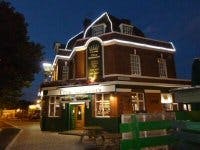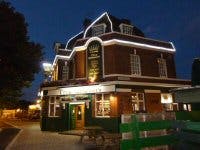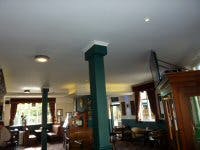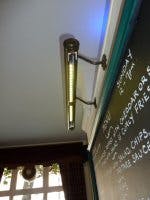The pub operators engaged Blue Sky Energy Solutions, also based in Richmond, to take an integrated approach to energy-saving. Blue Sky defines each individual aspect of how a business consumes energy and water using an audit process and on-line sub-metering. An energy-saving plan for the business and physical infrastructure is devised selecting those projects with the most attractive paybacks.
In this case the projects included ultra-low-energy LED lighting throughout the entire pub, insulation of the loft and selected walls, rainwater harvesting and turf roofs to resolve a drainage issue and an innovative beer-cooling scheme that exploits the natural chill of cold mains water and cool outside air minimising the use of the compressor.
“The pub is brighter and more comfortable for our customers, our utility bills have reduced significantly, and we continued operating the pub while the energy savings work was undertaken” says Joanna Keegan, operator of the Crown. “One very visible feature in the pub is an easy-to-read meter that shows everyone how much energy the pub is using at any time. This has become a focal point for pub staff and customers, and helps keep the business aware of its own energy use in real time.”
LED lighting
“Next we focused on the exterior lighting, and replaced metal-halide floodlights and fluorescent signage lighting,” says Spangler. “We reduced the energy consumption from 2 kW to 600 W, and it was brighter as well.”
Having already converted about two-thirds of the lighting to LEDs, it was decided to use LED lighting for the interior spaces as well, taking advantage of features such as dimming in conjunction with passive infrared (PIR) sensors.
Spangler says the lighting strategy was not based merely on replacing existing lamps with LED retrofits. There are some “swap-outs” but not many, he says. One advantage of taking an integrated approach to energy savings is that the lighting can be installed at the same time as changes are being made to the heating or cooling systems. This can make it much easier and cheaper to run cables, for example.
The 3-year payback quoted above is the overall figure for the whole pub. "The outdoor lighting will have a 3-year, but the best payback is for the bar-area lighting, where it will be 2 years," says Spangler. "Overall the LEDs consume about 60% less energy than the previous lighting scheme."
- Contact Blue Sky Energy Solutions at [email protected].









